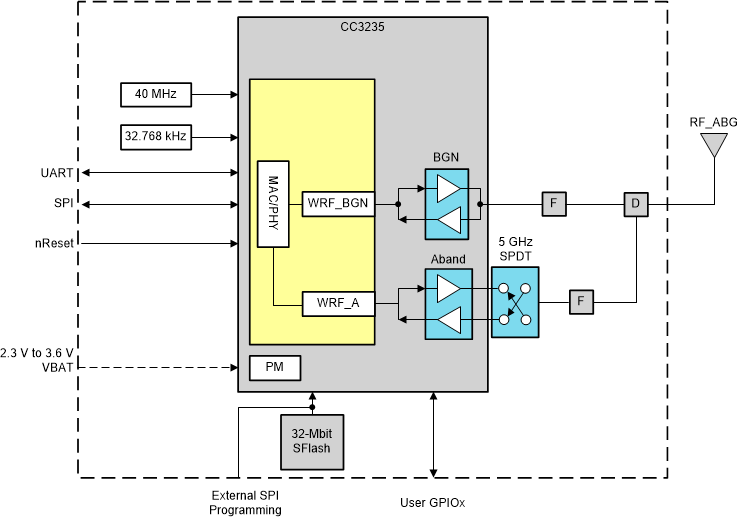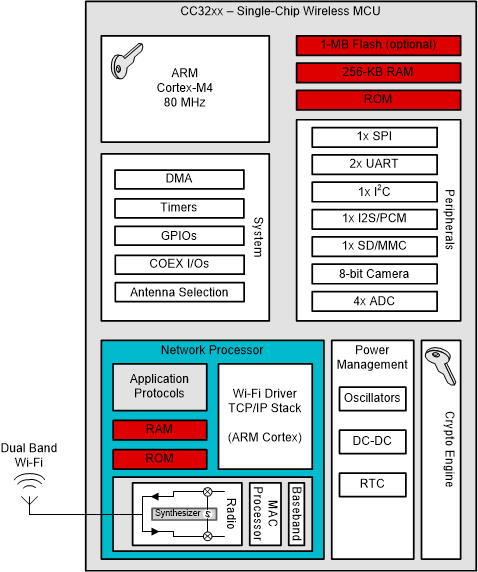TIDUEZ4 May 2021
- Description
- Resources
- Features
- Applications
- 5
- 1System Description
-
2System Overview
- 2.1 Block Diagram
- 2.2 Highlighted Products
- 2.3 Design Considerations
- 3Hardware, Software, Testing Requirements, and Test Results
- 4Design and Documentation Support
- 5About the Author
2.2.1.1 CC3235MODS
The CC3235MODS is fully programmable FCC, IC/ISED, ETSI/CE, MIC, and SRRC certified wireless microcontroller (MCU) module with built-in dual-band Wi-Fi connectivity. The modules integrate the 40 MHz crystal, 32.768 kHz RTC clock, 32 Mb SPI serial flash, RF filters, diplexer, and passive components. Created for IoT, the SimpleLink™ Wi-Fi® CC3235MODS module family from Texas Instruments is a wireless module that integrates two physically separated on-chip MCUs:
- Application processor— Arm® Cortex®-M4 MCU with a user-dedicated 256 KB of RAM and an optional 1 MB of executable flash.
- Network processor to run all Wi-Fi and Internet logical layers. This ROM-based subsystem completely offloads the host MCU and includes an 802.11 a, b, g, n dual-band 2.4 GHz and 5 GHz radio, baseband, and MAC with a powerful hardware cryptography engine.
The main new features include:
- 802.11 a, b, g, n: 2.4 GHz and 5 GHz support
- BLE, 2.4 GHz radio coexistence
- Enhanced security with FIPS 140-2 Level 1 validated IC inside
- More concurrent secure sockets (up to 16)
- Certificate signing request (CSR)
- Online certificate status protocol (OCSP)
- Wi-Fi Alliance certified for IoT applications with low-power capabilities and more
- Antenna selection
- Improved fast scan
 Figure 2-2 CC3235MODS Functional Block
Diagram
Figure 2-2 CC3235MODS Functional Block
Diagram Figure 2-3 CC3235x Hardware
Overview
Figure 2-3 CC3235x Hardware
OverviewThe CC3235MODS device family consumes 4.5 µA in hibernate mode which can support fast system wake-up and server reconnection and 135 µA in Low Power Deep Sleep (LPDS) mode while maintaining connection. The CC3235MODS switches between low-power modes in real time (using proprietary network learning optimization algorithm) resulting in at least 50% lower current consumption during beacon and at least 30% lower current consumption during video streaming. The CC3235MODS has, therefore, been adapted as the host processor in this design.